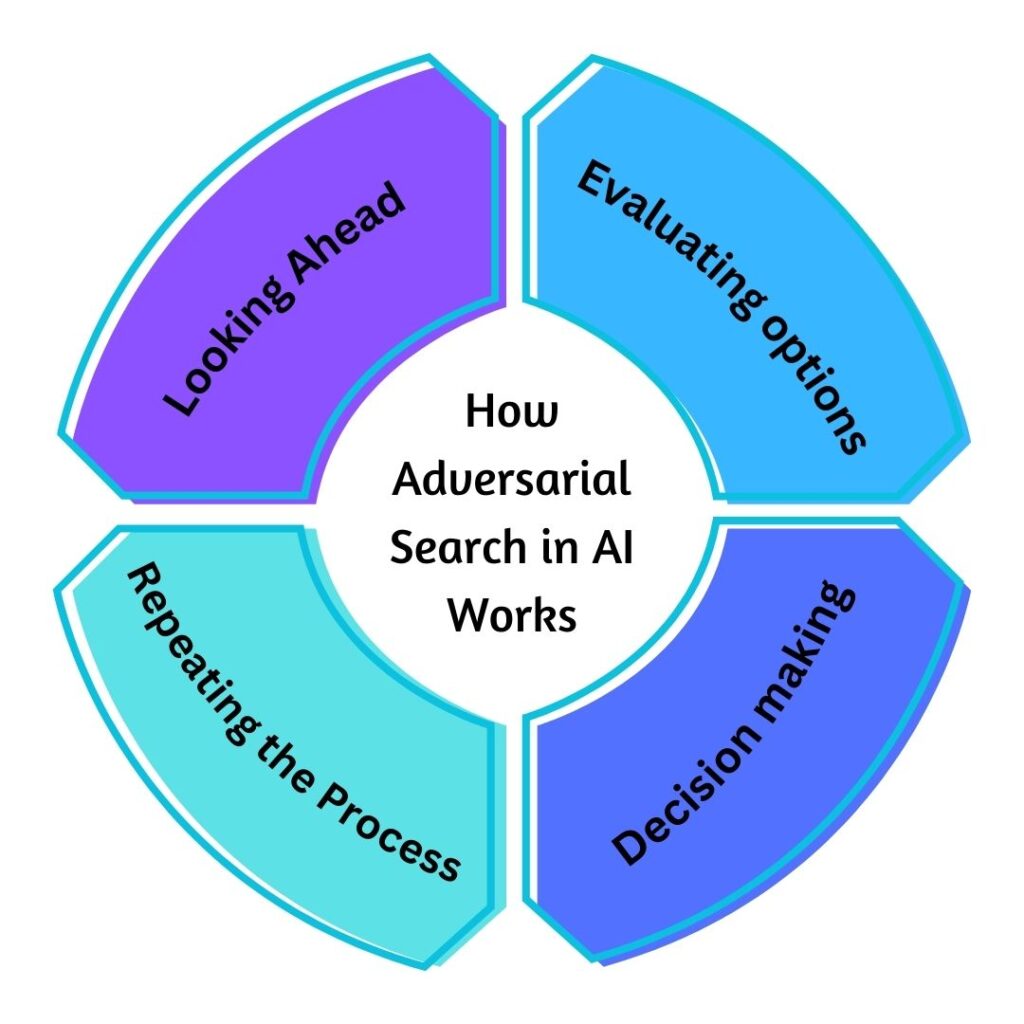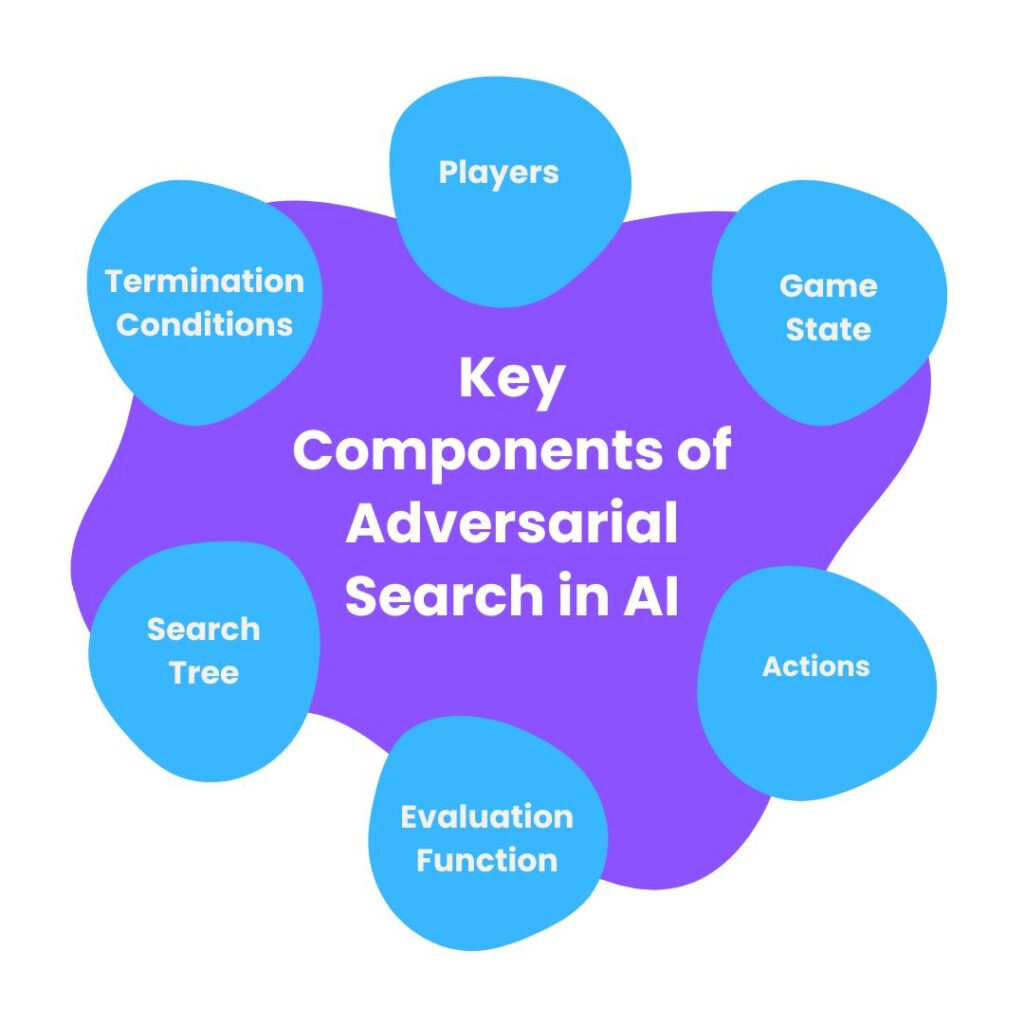Welcome to our blog about Adversarial Search In AI. This exciting topic is changing how computers make decisions in competitive situations. Let’s explore this fascinating world of artificial intelligence!
Adversarial Search In AI is a method that helps computers think ahead in competitive scenarios. It’s like a chess player planning moves, considering what their opponent might do next.
In this blog, we’ll dive into how Adversarial Search works, see real-world examples, and look at its key parts. We’ll also explore its benefits, challenges, and future potential. Get ready to learn about this powerful AI tool!
Table of Contents
- What is Adversarial Search In AI?
- How Adversarial Search in AI works
- Real-World Examples of Adversarial Search in AI
- Key Components of Adversarial Search in AI
- Advantages of Adversarial Search in AI
- Challenges and Limitations
- The Future of Adversarial Search in AI
What is Adversarial Search In AI?
Adversarial Search In AI is a way for computers to make decisions in situations where there’s competition. Imagine playing a game of chess against a computer.
The computer needs to figure out the best moves to beat you. That’s where Adversarial Search In AI comes in. It helps the computer think ahead and plan its moves, just like a human player would.
This type of search is used in AI to handle situations where there are two or more sides competing against each other. It’s not just for games – it can be used in other areas too, like business strategies or military planning.
How Adversarial Search in AI works

Adversarial Search In AI works by thinking ahead and considering different possible moves. Here’s a simple breakdown:
Looking ahead:
- The AI thinks about all the moves it can make
- It also considers how its opponent might respond
Evaluating options:
- The AI gives scores to different game situations
- It tries to pick moves that lead to good outcomes for itself
Decision making:
- After thinking through many possible moves and responses, the AI chooses the best option
Repeating the process:
- As the game or situation changes, the AI keeps using this method to make new decisions
Common Algorithms:
- Minimax: This algorithm helps the AI pick moves that minimize the opponent’s best possible move
- Alpha-Beta Pruning: This is a faster version of Minimax that skips checking some moves that won’t be useful
Real-World Examples of Adversarial Search in AI
Adversarial Search In AI is used in many real-world situations. Here are some examples:
Games:
- Chess: AI uses Adversarial Search to play chess at a high level
- Go: The game-playing AI AlphaGo uses advanced Adversarial Search techniques
- Video games: Many game AIs use this method to create challenging opponents
Beyond Games:
- Cybersecurity: Adversarial Search helps in predicting and countering cyber attacks
- Finance: It’s used in creating trading strategies that consider market competition
- Autonomous vehicles: These systems use Adversarial Search to navigate in traffic
Military Applications:
- Battle simulations: Adversarial Search helps in planning military strategies
- Drone control: It’s used in programming drones for various missions
Key Components of Adversarial Search in AI

Adversarial Search In AI has several important parts:
1. Players:
- Usually two (like in chess), but sometimes more
- One player is typically the AI, the other could be human or another AI
2. Game State:
- The current situation in the game or problem
- Includes all important information about the current position
3. Actions:
- Possible moves or decisions each player can make
- These change the game state
4. Evaluation Function:
- A way to score how good a position is for each player
- Helps the AI decide which moves are better
5. Search Tree:
- A map of possible moves and countermoves
- Helps the AI look ahead and plan strategies
6. Termination Conditions:
- Rules that decide when the game or problem is over
- Could be winning, losing, or reaching a certain state
Advantages of Adversarial Search in AI
Adversarial Search In AI comes with several benefits:
1. Better Decision Making:
- Helps AI make smart choices in competitive situations
- Allows for long-term planning and strategy
2. Adaptability:
- AI can adjust its strategy based on the opponent’s actions
- Useful in changing environments
3. Learning from Experience:
- AI can improve its performance over time
- It can learn from past games or situations
4. Handling Uncertainty:
- Deals well with situations where not all information is known
- Can make good guesses about hidden information
5. Wide Application:
- Useful in many fields beyond just games
- Can be applied to business, military, and other strategic planning
Challenges and Limitations
While Adversarial Search In AI is powerful, it does have some drawbacks. One big challenge is that it can be very slow, especially for complex problems.
The more moves ahead the AI tries to think, the longer it takes to make a decision. This can be a problem in fast-paced situations.
Another issue is that Adversarial Search In AI might not work well in games or problems with too many possible moves. It can also struggle with games where it’s hard to tell who’s winning until the very end.
Lastly, this method assumes that the opponent always makes the best possible move, which isn’t always true in real life. This can sometimes lead to overly cautious strategies.
The Future of Adversarial Search in AI
The future of Adversarial Search In AI looks exciting. Researchers are working on making it faster and smarter. One big trend is combining Adversarial Search with machine learning.
This could help AI learn better strategies over time. Another area of focus is making Adversarial Search work better for problems with more than two players.
This could make it useful in more real-world situations. There’s also interest in using Adversarial Search to help AI understand and respond to human behavior better.
As AI continues to grow, Adversarial Search will likely play a big role in many areas, from smarter video game characters to more advanced planning tools for businesses and governments.

